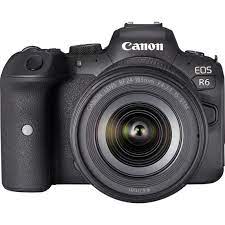Fujifilm X-Pro3 Review

The Fujifilm X-Pro3 is a highly anticipated addition to the company’s range of mirrorless cameras, particularly catering to street photographers and enthusiasts who value a blend of remarkable design and performance. This article will provide you with an in-depth review of the X-Pro3’s features, performance, and overall usability.
Design and Build
The X-Pro3 showcases an all-metal, weather-sealed construction with a sleek retro design that echoes classic rangefinder cameras. The durable titanium top and bottom plates provide additional sturdiness without causing the camera to be too heavy or cumbersome – weighing in only at 497 grams.
A key design feature setting the X-Pro3 apart from previous models is its hidden 3-inch 180-degree tilting LCD touchscreen. The screen is concealed until it is folded down when required – making it ideal for discreet shooting or simply eliminating distractions while focusing on your photography.
The innovative hybrid optical-electronic viewfinder offers superior optical quality compared to typical electronic viewfinders. With this feature, users can quickly switch between the two, allowing for versatile framing options.
Performance
The Fujifilm X-Pro3 features a 26.1-megapixel X-Trans CMOS 4 sensor, supported by the powerful X-Processor 4 image processing engine. This combination ensures high-resolution images are captured with outstanding color accuracy and low noise levels.
Its autofocus system boasts up to 425 phase-detection points spread across the entire frame, ensuring quick and accurate subject tracking even in low-light conditions. The camera’s continuous shooting rates are impressive as well – reaching up to 11 fps (mechanical shutter) and up to 20 fps (electronic shutter).
One notable downside is the absence of in-body image stabilization (IBIS), which might affect users who frequently shoot handheld at slower shutter speeds.
In terms of video, the X-Pro3 captures 4K video at up to 30 fps and Full HD up to 120 fps – suitable for impressive slow-motion footage. However, it is essential to note that the X-Pro3 is primarily geared towards still photography enthusiasts with its video functionality being adequate but not its primary focus.
Handling and Usability
The overall handling of the Fujifilm X-Pro3 is excellent, thanks to its intuitive design and dedicated dials for shutter speed, ISO, and exposure compensation. The customizable ‘Quick Menu’ button and touch functionalities provide easy access to frequently used settings.
Battery life is satisfactory, with CIPA ratings of approximately 370 shots per charge when using the electronic viewfinder and 440 shots using the optical viewfinder. However, carrying an extra battery for longer shooting sessions would still be a prudent choice.
Conclusion
The Fujifilm X-Pro3 emerges as a fantastic option for street photographers and enthusiasts who appreciate a perfect harmony between design and performance. Its unique hybrid viewfinder, hidden LCD touchscreen, and outstanding image quality are some of its defining features that make it worthy of consideration. However, if you require a more video-oriented camera or desire in-body stabilization, it might be prudent to explore other options within Fujifilm’s lineup or competing brands. Overall, the X-Pro3’s charm lies in its ability to blend vintage aesthetics with modern technology to create an enjoyable photography experience.






